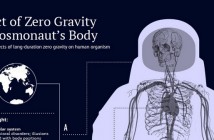Tracking Down New Earths
The National Aeronautics Space Administration has its mission of searching earth-sized planets. Actually, the mission is planned in honor to the renowned Johannes Kepler. His elemental contributions to the fields of optics and celestial mechanics are a part of this mission. Almost six hundred million dollars are spent in the funding of this mission that is expected to last for three and a half years.
A Survey of the Milky Way
The mission is focused on the survey of Milky Way and discovery of the possible larger planets or Earth-sized planets. These planets are found in proximity on the habitable zone of the solar-like stars. They also have the goal of determining the number of stars in the galaxy which have planets.
Although the mission is considered as a search for potential planets, it is not after the quest of life. It is still approved for its extension in the entire fiscal year, in 2016.
The Beginning of New Exploration
On the sixth day of March 2009, Kepler is officially launched from the air force station of Cape Canaveral. The official launching happened at exactly ten forty-nine and fifty-seven second in the evening, as for the official Eastern Time. The launch vehicle is named as the United Launch Alliance Delta II 7925.
Its payload fairing jettison constitutes the time of two-hundred eighty-one point zero seconds; altitude of seventy-three point one nanomiles and velocity of nine-thousand nine hundred thirty-two frequency per seconds. As per the second restart, the time is at exactly three thousand one-hundred ninety point zero seconds; altitude of ninety-five point eight nanomiles and velocity of twenty-six thousand six hundred twelve frequency per seconds.
For the third stage of ignition, the time is at exactly 3,333.8 seconds with the altitude of ninety-eight point zero nanomiles and velocity of 27, 223 frequency per seconds. It is expected to orbit at Hp of ninety-nine point nanomiles; C3 of 0.61 km2 per sec2; DLA of 24.01 deg and RLA of 147.52 deg. Its payload separation constitutes of the time of 3,708.8 seconds; alt of 389.6 nanomiles and velocity of 34,861 fps.
There are still required numbers to be orbited and a graphic epoxy motor with the time of 131.5 seconds; altitude of 30.8 nanomiles and velocity of 7,962 fps.
Optic Telescope Design
In regard with the telescope, Kepler has its huge aspect of view for the astronomical telescope with an approximate one-hundred square degrees. Its photometer optics is modified from the classic design of Schmidt. The optics basically includes of zero point ninety-five aperture that is infused with silica Schmidt corrector plate. It also has its one point forty five meter diameter or eighty five percent light weight and low expansion primary mirror.
Apart from it, the main mirror is eighty six percent light weighted while the solid mirror weighs fourteen percent. At the core of the photometer is the central plane array. The sapphire field comes along with invar substrate, flattering lenses, radiator and heat pipes. The radiator contains almost forty-two CCD’s or better known as (charge coupled devices). These CCD’s are chips that are sensitive from light. They are not being used in taking pictures in the traditional sense.
The star field that is chosen is the Orion Spiral Arm with six hundred to three-thousand three hundred light years that serve as the distance of the stars from where earth-sized planets are chosen.
As of the fifth day of March in 2013, one-hundred fourteen planets are confirmed and four-hundred sixty one new planets are discovered. The number of planet candidates is at exactly two-thousand seven-hundred forty candidates.




